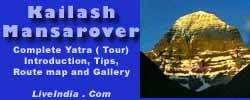 |

India's True Portal |
 |

India's True Portal |
 |
 |
Herbs for HIV
There are many more unknown
antiHIV medicines awaiting discovery in Latin America. Some estimate that
less than 1% of the forest species of Latin America have been chemically
investigated. Speaking of the world at large, Fabricant and Farnsworth
(2001) note that the number of higher plant species (angiosperms and gymnosperms)
is estimated at 250,000 (lower estimate ca 215,000, upper level as high
as 500,000). Of these only about 6% have been screened for biologic
activity, and a reported 15% have been evaluated phytochemically. (I don't
think these high figures would apply in Latin America.) They identified
122 compounds of defined structure, obtained from only 94 species of plants,
that are used globally as drugs and demonstrated that 80% of these have
had an ethnomedical use identical or related to the current use of the
active elements of the plant. I translate this to mean that 80% of these
folk medicine now have a scientific rationale. Does that mean that all
folklore will have as good a batting average? Not necessarily! But it seems
the more we dig, the more phytochemical rationales we find behind the folklore.
(JAD). "It was estimated that in 1991 in the United States, for every 10,000
pure compounds (most likely those based on synthesis) that are biologically
evaluated (primarily in vitro), 20 would be tested in animal models, and
10 of these would be clinically evaluated, and only one would reach U.S.
Food and Drug Administration approval for marketing. The time required
for this process was estimated at 10 years at a cost of $231 million (U.S.)..."
Medicinal plants such as tulsi, ashwgandha and shilajit, which have so far been used as home remedies for cough and cold, may hold the key to the treatment of people living with HIV/AIDS. The Department of Virology in Haffkine Institute for Training, Research and Testing in Parel, conducted in-vitro tests (tests done outside living systems) on the herbal extracts of the three plants against Reverse Transcriptase, an enzyme that is found in the Human Immuno-deficiency Virus (HIV) and causes it to multiply. The tests showed that these herbs have the potential to act effectively against the enzyme. “We wanted to know whether these herbal plants have any anti-HIV activity and if they can inactivate the virus or at least prevent it from replicating, or modulate the body’s immunity,” said Dr Sweta Kothari, senior scientific officer, Department of Virology, Haffkine Institute. The study began in 2006 with the three herbal extracts being tested against Reverse Transcriptase. Simultaneously, a drug named azidothymidine (AZT), which is used for the treatment of HIV/AIDS, was also tested. Results of this comparative study showed that tulsi and shilajit gave better results than that of AZT drug on the enzyme. “When AZT was 70% effective in blocking the enzyme activity, tulsi and shilajit showed 80% to 90% activity,” said Kothari. Now that the herbal extracts of these plants have shown positive results, the institute is planning to take the research to the next level. “We will work on finding the exact molecules in those herbal extracts which are acting against the virus. This can also help in evaluating other herbal plants which have similar active molecules,” said Ritwik Dahake, scientific officer, Department of Virology, Haffkine Institute. “We know a large number of herbal preparations which are used in traditional Indian system of medicine, however, they must be analysed and evaluated in the light of the mechanism of their action and specific site of action. “We are planning to have
a mechanism-based screening of medicinal plants which are used in treatment
of various infectious and other ailments,” said Dr Abhay Chowdhary, director,
Haffkine Institute for Training, Research and Testing. “The institute is
also trying to study the green ways of controlling various insects.”.
|
|
|
|
(Liveindia.com or Mr.Rajesh Chopra is not responsible for any wrong information under this site, For confirmation of any information it is recommended that you reconfirm it from your end.)
 |
 |
 |
 |
 |
 |
 |
www.liveindia.com mail:- liveindia@gmail.com |
 |
 |
 |
 |
| Privacy Policy for LiveIndia.Com |
|
|